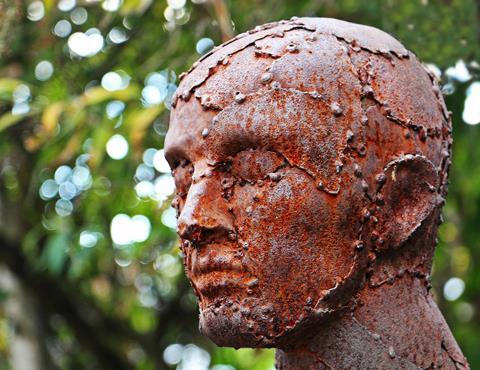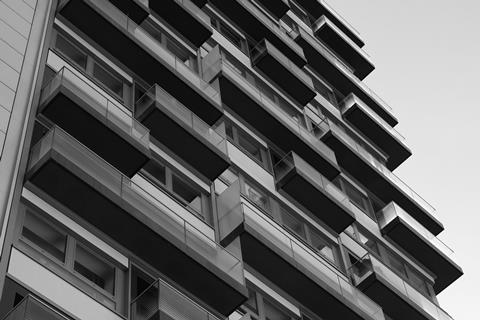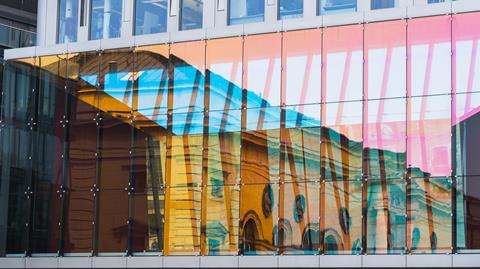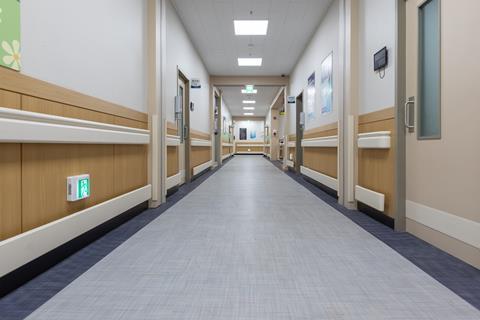Most if not all multicellular organisms including humans are permanently associated with specific communities of microorganisms and form a functional unit with them, termed ‘metaorganism’ or ‘holobiont’. There is increasing evidence that this association between a host and its microbes not only determines health and disease but also influences the behaviour of humans and other animals.
As the hitherto hidden role of microorganisms becomes visible, it becomes clear that we need to rethink many long-established and familiar relationships—in particular, the active role of the built environment in shaping microbial communities.
We contain multitudes
The recognition that many organisms are an evolutionary community of visible host cells, and a large number of mostly invisible microbes has attracted attention in the life sciences, evolutionary biology, and also medicine. The 2016 New York Times bestseller by Ed Young “I Contain Multitudes: The Microbes Within Us and a Grander View of Life” captured that in a nutshell. Today, we know that all our body surfaces are colonized by bacteria; and that the vast majority of microbes colonizing us are not pathogens, but that we need them for our development, sustenance, and also for protection against possible infectious agents. It is known that organisms are always multi-organismic and there are no individuals in the strict sense that can exist on their own; and that we exist only as an ecosystem in an evolutionary partnership with microbes.
This progress is due in large part to the application of “metagenomic” methods, which allow us to determine the composition of a microbial community by sequencing its genetic material without having to culture its members. This has made it possible to show that a host-specific microbiome provides plants and animals with important functions related to metabolism, immunity, development, and also adaptation to an ever-changing environment. Microbes contribute to developmental transitions and life history traits such as developmental tempo and longevity. In recent years, microbiome research has also revealed that the interactions between microbes and their hosts are ecologically and evolutionarily significant across the entire phylogenetic tree of life.
Animals and plants have evolved in a microbial world and depend on their associated microbes (fungi, protists, bacteria, and viruses) to function. All life processes, including the health and disease of the organism, as well as biorhythm, sensory input, reflex, and motor action, can only be understood in the context of this functional cooperation between the host organism and microorganisms. Symbiosis and cooperation with microbes thus emerge as a fundamental principle in evolution.

Loss of microbial diversity and the emergence of lifestyle diseases
The genetic diversity of the microbiome of humans and other animals has been significantly reduced at an ever-increasing rate during the 10,000-year transition from human-modified forest and savanna environments to rural to urban life. Contemporary hunter-gatherer societies in the Amazon regions and Tanzania, for example, have about twice as many microbial species in their guts as residents of Western countries. Lifestyle diseases, such as inflammatory bowel disease and obesity, are rarely found there.
Interestingly, however, the diversity in the microbiome of members of these communities also dwindles as soon as the younger generation, in particular, moves out of the villages into larger cities. With these field studies, a gradient can clearly be measured: the further one moves away from living in mobile camps to a small village to larger and very large cities, the lower the diversity in the gut microbiome and the more frequent the occurrence of chronic inflammatory lifestyle diseases. These include chronic immune diseases, for example, Crohn’s disease, asthma, or multiple sclerosis, which have reached unprecedented incidences in Europe and North America since the mid-20th century. Other lifestyle diseases include diabetes, obesity, asthma, food allergies, neurodermatitis, cardiovascular disease, chronic bowel inflammation, and esophageal reflux, along with the rise of multiple cancers at ever younger ages.
An important cause of the health problems occurring today is the mismatch between the new environmental conditions and the adaptation that occurred during human evolution, including the resulting traits that are embedded in the human genome. These “mismatch diseases” thus represent, in effect, the trade-off between the body we inherited and the new environment we created. Now that we know that individuals are metaorganisms and that the evolutionary success of a species is also based on the formation and maintenance of a diverse microbiome, a loss of microbial diversity also affects the ability to adapt quickly enough to changing environments.
If it turns out to be true that high species or gene diversity in the microbiome is of great importance for health, this also means that these missing microbes provide the key to preventing or correcting dysbiosis. Thus, this may be an effective means of treating and curing the wide range of urbanization-related diseases in the future. This opens up an important new field of action for modern urban and building planning.

The urban habitat
Urban habitats are unique ecosystems and very different environments than those in which our ancestors lived. In 2018, 55% of the world’s population lived in urban environments, or cities, according to the United Nations. By 2050, that number is expected to reach 68%. In Africa, urbanisation is expected to increase by 300% over the next 40 years. Overall, the urban lifestyle, in combination with many other factors, has ensured that life expectancy and quality of life have improved significantly for the majority of humanity. However, buildings as such and the triumph of urban living have also produced negative effects by shielding people to a greater or lesser extent from contact with their microbial environment.
The shift from mobile life that significantly modified our particular forest and savannah environments, to settled living in even more dramatically modified rural areas, to living in cities largely disconnected from most of the unicellular and multicellular species we used to live with, means that there has been a massive change in our environment and the way we interact with other forms of biological life in our daily lives.
With urbanisation comes densification and increasing time spent indoors. Humans across the planet now spend on average more than 90 percent of their lives indoors within buildings and much of the rest of the time in enclosed vehicles or partial shelters. Most of the “outdoor” space of cities is completely sealed off from the soil, with a few trees from just a few species poking through and hosting some bird, insect, and microbial life. While there is a greater density of soil, plant, and animal life in demarcated zones of urban areas, like parks, this life is very different and dramatically limited compared to that outside of cities, and even then, access to these limited urban parks is usually restricted.
“The disadvantaged in the human communities that have the greatest health challenges have the least access to the most biotic environments.“
Overall, the number of animal and plant species, i.e. biological diversity, is much lower in urban habitats. The extent of these presumably unfavourable consequences for the composition and diversity of the human microbiome can hardly be estimated as yet but the built environment is clearly fostering dysbiosis. A double crisis both encourages the emergence of pathogens and diminishes the human organism’s ability to resist or adapt to those pathogens.

Why we need to rethink the buildings we currently live in
Although currently, our understanding of the composition and distribution of microbial communities in buildings is limited, our modern life in built environments increasingly prevents contact with the multitude of microbes in the environment that preceded cities. Buildings are ecosystems that are part of larger urban ecosystems. Each space is a unique ecosystem. Buildings themselves, therefore, must be viewed as complex organic systems in the sense of countless interdependent microbial communities, which also have an impact on our health. This can have negative consequences, for example by creating new niches for disease hosts and vectors in buildings, concentrating waste and toxic substances, or reducing ventilation and the entry of sunlight.
All of this, in turn, influences the human microbiome in a variety of ways. For example, the built environment creates novel reservoirs of harmful microbes adapted to humans and provides vectors for their spread through human populations. This also reduces the exposure of individuals to beneficial microbes or alters human behaviour to inhibit the beneficial transmission of microorganisms between people and other animals. In the name of health, the built environment is treated as antimicrobial in its materials, construction, and maintenance, which has the paradoxical effect of selecting for a smaller set of microbes that threaten human health.
If human health is defined as being dependent on a large diversity of the microbiome, then most of today’s buildings must be considered as not conducive to health in terms of construction and design, materials, or type of use. This is because, in sum, their effects appear to reduce microbial diversity and foster the rise of pathogens, which leads to poorer overall health for their occupants.

The unwanted microbial guests of anti-microbial design
Often without realising it, urban planners and architects that are dedicated to an antibiotic philosophy based on the association of bacteria with epidemic disease, have actually been designing the habitats for microbes in buildings and interiors - thus determining the growth and proliferation of specific microbial communities.
“Microbiology of the built environment” (MoBE) is the name of a new discipline that studies cities and buildings, including homes, schools, university dormitories, hospitals, offices, subway systems, airplanes, and even the International Space Station. It uses metagenomics tools to characterize the microbiome in each particular interior setting. At the core of this new science of building is a multidisciplinary approach linking architecture, design, engineering, microbiology, and anthropology. Looking through the lens of microbiome research promises important insights into the impact of building design, planning, materials, ventilation systems, engineering infrastructure, environmental control, maintenance, and historic preservation. Treating contemporary buildings as both the cause of disease and a lowering of human capacity to resist disease offers a different paradigm for both prevention and treatment.

The ‘Hospital’ Microbiome Project” at the University of Chicago, for example, was designed to analyse microbial samples from surfaces, air, staff, and patients from a new hospital pavilion in order to better understand the factors that influence bacterial population development in healthcare environments. Human microbiome research has shown that the use of antibiotics can disrupt the normal array of microbes that live in and on our bodies. The constant attempts at sterilisation in hospitals might function on a similar level. It might take out some of the harmful pathogens but at the same time it also drastically reduces the many beneficial microorganisms. This results in a loss of colonisation resistance, making hospitals very unhealthy buildings. Indeed, the most dangerous places in hospitals are those subjected to the most relentless sterilization techniques. Extreme sterilization selects for those microbes that are resistant to those techniques and no longer have any competition. The so-called “superbugs” of antibiotic and antimicrobial-resistant strains thrive in operating theatres and intensive care wards, contributing to the fact that a very high and ever-increasing proportion of patient deaths are caused by the hospital building itself.
Given the new findings of metaorganism research, it seems urgent to rethink the character of indoor spaces, as well as high-traffic places and frequently used routes between buildings. Rethinking sterile environments is much needed. Rather than designing built structures as defences against any microbial threat, cities, public buildings, workplaces, homes, and transportation systems should be included in an interconnected, metaorganismic (holistic) way of thinking. Outdoor spaces have to be understood as vital to indoor spaces. The soil, plant, animal, and microbial diversity associated with the outdoors has to be associated with the indoors. Buildings need to be rewilded. Human-centred design might give way to microbe-centred design focused on building “microbiome-friendly homes”.

Future architecture should restore permeability for microorganisms
Since their invention, buildings have unintentionally caused health problems by separating humans from the microbial diversity of soil, plant, and animal life, even though people have always tried to make them healthier and safer. The very effort to use the built environment to increase human health and capacity ultimately causes a loss of health, which is countered by increased birth rates and medical advances, but repeated health crises ultimately force a change in the built environment and protocols of behaviour in relationship to it. There is a chicken-and-egg relationship between microbes and the built environment in which microbes, humans, and buildings co-evolve. The built environment has always shaped microbial communities and in turn, was shaped by them. Properly speaking, the human-made and human-making built environment has to be placed in an extended evolutionary history of microbes.
Probably the biggest killer in human history, the ancient bacillus of tuberculosis, for example, not only co-evolved with the human species that it threatens but co-evolved with the built environment. The decline of health of those occupying the first Neolithic houses (shorter stature, poorer nutrition, osteoporosis, cardiovascular disease, etc) that was only overcome by a dramatic increase in birth rate is linked to the way this newly networked built environment (interlinked houses, villages, and eventually cities) became a reservoir and medium for the deadly bacteria to spread. Yet the first settled houses were not simply the cause of the three-way dance of bacteria, humans, and buildings. The buildings themselves might well have been produced to house the modified behaviour necessary for hunter-gatherers to survive the late Paleolithic arrival of human-adapted strains of the bacillus. The microbe then had to adapt itself again not to use the infectious efficiency of its new home to completely wipe out its human host and therefore itself.
Emergency protocols in the face of epidemic diseases like TB, the bubonic plague, cholera, smallpox, and typhus eventually become normalized in everyday design and behaviour. In this sense, buildings and cities are literally shaped by disease. Humans and their microbial communities have been inseparable from buildings and their microbial communities for at least 10,000 years. Yet the overall trajectory has been steadily towards a reduction in microbial diversity within the building interior and therefore within the human interior. The original disconnection from the environment by the first human-built houses haunts contemporary life which is ever more disconnected and therefore ever more threatened by buildings themselves. The contemporary health crisis calls for an even more dramatic transformation of the built environment, one that literally perforates the line between human and more-than-human life that was first drawn by Neolithic buildings.

The study of the links between architecture and health is therefore by no means new, and a crucial question today is: how can buildings be designed for better health and constructed in such a way that a complex and diverse microbiome can survive? As proposed in a recent perspective paper, a basic prerequisite for this is that in the future, buildings are developed with the additional purpose of exposure to microorganisms - and no longer see them exclusively as a barrier to ward off microorganisms. The aim is to reduce the isolation from microbial environments. On the contrary: buildings can be reopened up to soil, plant, and animal diversity. Such an architecture would be defined by its permeability rather than the current prophylactic paradigm of shelter. Every aspect of the built environment needs to be reconsidered–from the selection of materials, many of which are currently designed to be anti-microbial, to the way they are assembled, to the transitions between inside and outside, to maintenance protocols with an arsenal of antimicrobial finishes, filters, chemicals, and routines. The dry, smooth, sealed surfaces hostile to microbes that define contemporary spaces need to give way to more permeable, moister environments that offer shelter to humans by offering shelter to microbes, hosting rather than excluding microbiodiversity.
New perspectives for a future microbiome-friendly architecture
Our urban way of life ignores the fact that the body has adapted to its environment and its microbes over thousands of years and that it is only fit and healthy in contact with these partner organisms.
Only if we accept this multi-organismic complexity will we arrive at a deep understanding of health and thus an understanding of common diseases.
By looking at the impact of building characteristics on the human microbiome, we are adding a whole new and important dimension to this complex. We are convinced that the thoroughly revolutionary view of living organisms and microbes as a functional unit will also shift the boundaries of architecture and urban planning in the future.
Further reading & information
Humans & the Microbiome – CIFAR








No comments yet